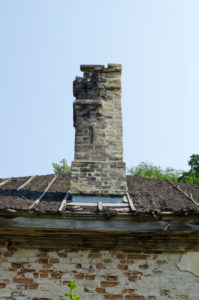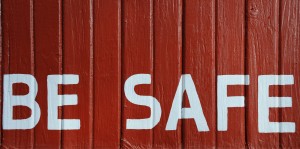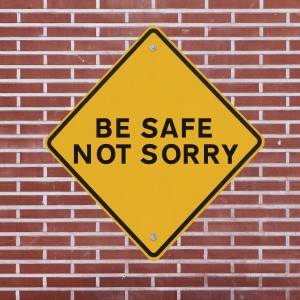 There are a number of ways we get our fireplaces ready for winter; having them swept, buying new firewood, and sweeping out ashes and coals are all ways to make sure your fireplace is safe and ready to use. However, there may be hidden hazards hiding in your chimney liner.
There are a number of ways we get our fireplaces ready for winter; having them swept, buying new firewood, and sweeping out ashes and coals are all ways to make sure your fireplace is safe and ready to use. However, there may be hidden hazards hiding in your chimney liner.
A properly lined chimney is an important part of the helping your fireplace burn safely, efficiently, and last longer. Because the majority of the chimney liner cannot be seen without an inspection and the use of technology such as closed circuit cameras, damage to the chimney liner may go unnoticed.
How a chimney liner protects your home
According to the Chimney Safety Institute of America, chimney liners are “A clay, ceramic, or metal conduit installed inside of a chimney, intended to contain the combustion products, direct them to the outside atmosphere, and protect the chimney walls from heat and corrosion.”
Because of their important purpose, a requirement for chimney liners is included in most state and local building codes. Chimney liners play an important role in protecting your home against the heat, gas, and smoke created in your fireplace. Protecting against a transfer of heat keeps surrounding walls, beams, frames, and other building materials from reacting to the heat in the chimney; when a chimney liner is damaged, the National Bureau of Standards found adjacent building materials can catch fire in as little as three hours due to heat transfer.
Chimney liners also keep smoke and gasses from getting into the air supply of your home. A quality, undamaged liner helps keep toxic byproducts of combustion, including the extremely dangerous carbon monoxide gas venting safely up and out of your chimney instead of lingering in the flue or seeping into your home. This is especially important during the winter when most homes have their doors and windows tightly closed, letting in little outside air.
Does my chimney need to be relined?
Because of the difficult to access location, length, and size of the chimney liner, repairs in specific areas are often too difficult to complete. Because of this, a complete chimney relining may be recommended. There are several reasons why a chimney might need to be relined.
Damage. Damage to the chimney liner can cause it to lose the ability to protect your home against heat transfer, as well as allow smoke and gas into your home’s air supply.
New fireplace or insert. A new fireplace or insert may have different venting requirements than your old unit; relining the flue can ensure your new fireplace burns as safely and efficiently as possible.
Changing fuel sources. The byproducts of combustion from wood, gas, coal, and pellet fires are all different; because of this, they require different types of chimney liners. If you have changed fuel sources, a new chimney liner can protect your flue.
Winter weather is just around the corner; make sure your fireplace is ready to be safely used all year round by having the liner checked. For more information on the importance of a quality chimney liner or to have your chimney inspected, contact Jack Pixley Sweeps today!
Improper Flow
The most important job of your chimney is for warm air come into your home and cold air to escape. Not only is this interchange important, but a clean chimney, that is well-maintained will also filter out most harmful gases. If anything gets inside your chimney and interrupts or diverts air in a way that is out of balance – your health and your home could be at risk.

In order to bring the right air in…at the right balance, you cannot let anything blocking the air to remain. Annual maintenance of your chimney, keeps channels open.
There are many reasons why a chimney gets too much draft. It could be due to a clogged chimney flue that’s filled with creosote. It could also be caused by other objects or even animals that make their way into the flue. Or it could also be because of poor chimney maintenance. It could be many other things. It’s important to solve this problem right away because of health and safety reasons. This can help lessen the chances for harmful toxins from entering the home and for it to safely make its way to the outside of the house without having to worry about fire or dangerous chemicals in the air.
You’ll know when there’s a draft when there is little amount of heat produced by the fire in your fireplace. Another basic observation is a distinct smell lingering inside or air entering your home through the firebox. Here at Jack Pixley Sweeps we make sure your home is cared for in the best way possible; with excellent services and licensed CSIA Certified Chimney Sweeps.
The Symptoms
- Persistent smell inside the home
- Difficulty in starting or keeping the fire despite using seasoned wood
- Smoke spillage
- Not enough heat
The Remedy
Draft in the chimney can be solved by doing four things:
- First, what our people would usually do is to inspect your chimney. This can help them know what equipment to use, what other problems might be occurring and why draft existed in the first place.
- Second, thorough cleaning/sweeping of the chimney is a must. This procedure will remove draft inside the chimney, providing unrestricted air to properly flow.
- Third, sealing the leaks in your chimney can also be a good solution. You know how water can easily destroy the masonry walls and bricks in your chimney thus causing draft to happen and mold to form.
- Lastly, is to have a chimney cap installed. This can keep out animals, birds and debris from accumulating in your chimney.
A fireplace can be a beautiful centerpiece to a home, but the overwhelming consequences caused by not having routine maintenance done to your chimney are not so pleasant. It is recommended that you get a professional chimney sweep and basic inspections done once every year. Most homeowners do not understand that if they do not follow through with these recommendations, it could cause bigger issues later. One of the things impacted could be the air quality in your home.

Taking preventative measures like annual chimney inspections can save you lots of money and headache in the long run.
Many of the common and easy to fix problems start with the simple chimney sweep. The first is that until removed, creosotes and other particles will continue to build up inside of the chimney. This could lead to a draft problems by creating blockages. When you have a draft problem, the smoke from the fire cannot leave the chimney properly and then is forced back into your home. This air will contain chemicals such as Carbon Monoxide that could potentially be harmful to you and your family. In rare occasions, too much CO can lead to fatalities. Using different types of wood can also be helpful because they may produce less creosotes than others, so make sure you do all your research when buying firewood. Even though you may enjoy the smoky, outdoors smell, that is not a good thing to have in the home because it contains many of the particles found in creosotes. Make sure you have doors on the front of your fireplace to help air from flowing back into the room, and that the room is large enough to handle whatever may come back.
Another problem with not fixing problems in the chimney is that if you have cracks or places that water can collect mold can begin to form. This can cause a few spots, but if it spreads it can even go as far into the walls of your home and other parts of the foundation. These particles could then get to the vents and released into the home, not to mention the threat to the structural integrity of your home. Mold can cause many different kinds of health problems and is particularly bad for those with asthma or other respiratory issues. Reduce potential indoor pollution today by scheduling a certified sweep from Jack Pixley to alleviate these worries.
 There are a number of ways we get our fireplaces ready for winter; having them swept, buying new firewood, and sweeping out ashes and coals are all ways to make sure your fireplace is safe and ready to use. However, there may be hidden hazards hiding in your chimney liner.
There are a number of ways we get our fireplaces ready for winter; having them swept, buying new firewood, and sweeping out ashes and coals are all ways to make sure your fireplace is safe and ready to use. However, there may be hidden hazards hiding in your chimney liner.

